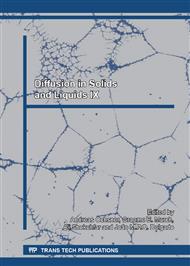p.263
p.269
p.275
p.280
p.286
p.292
p.298
p.306
p.311
Rising Damp: Optimization of the Wall Base Ventilation System
Abstract:
Rising damp constitutes one of the main causes of monumental heritage and old buildings degradation, especially, its thick walls with heterogeneous composition. The LFC-FEUP has been developed important research in rising damp domain. In recent years, was validated and experimentally characterized the operation principle of a technique called "wall base ventilation system" for the treatment of rising damp in monumental heritage and ancient buildings consisting of circulating air at the base of the buildings walls with high thickness and heterogeneity in its constitution, with a saturation distant relative humidity. The studies previously developed allowed the interest and viability of the proposed system, taking time to develop a methodology for optimizes it. In this paper it is presented the optimization of the wall base ventilation system based on some important physical parameters. To optimize the system, it was developed a 2D evaporation model that describes the moisture transfer between the system and the wall as well as the water vapour transport throughout the system (Evaporation and Transport Model – ETM). It was also used and adapted another 2D model, to describe the rising damp phenomenon in buildings walls, considering the wall base ventilation system (Rising Damp and Evaporation Model – RDEM). Finally, the design model was developed, using both models (ETM and RDEM) and some experimental validation was done, which allowed the comparison between the levels archived by the wet front analytically and experimentally.
Info:
Periodical:
Pages:
311-316
Citation:
Online since:
May 2014
Authors:
Price:
Сopyright:
© 2014 Trans Tech Publications Ltd. All Rights Reserved
Share:
Citation:



